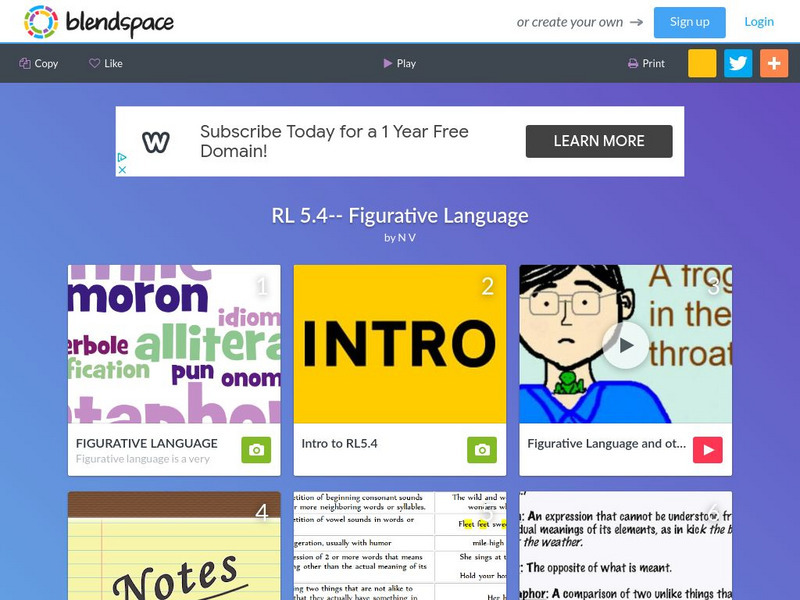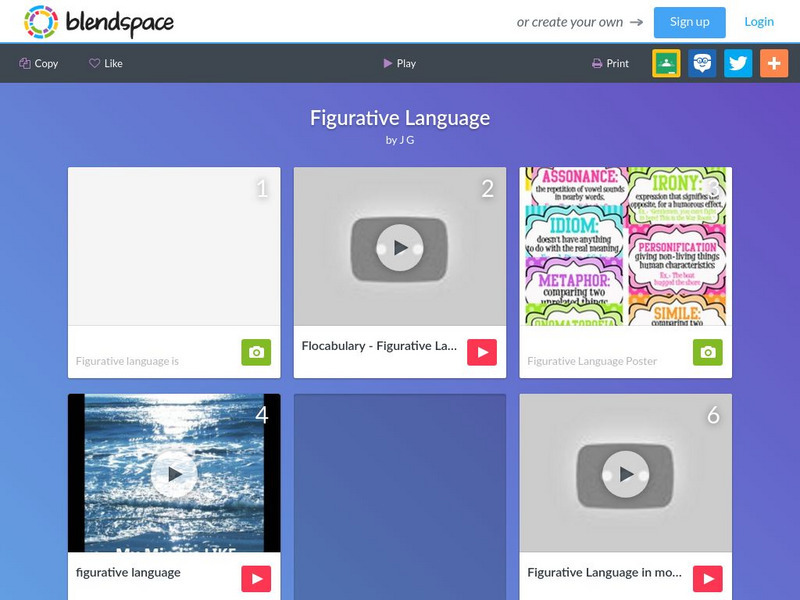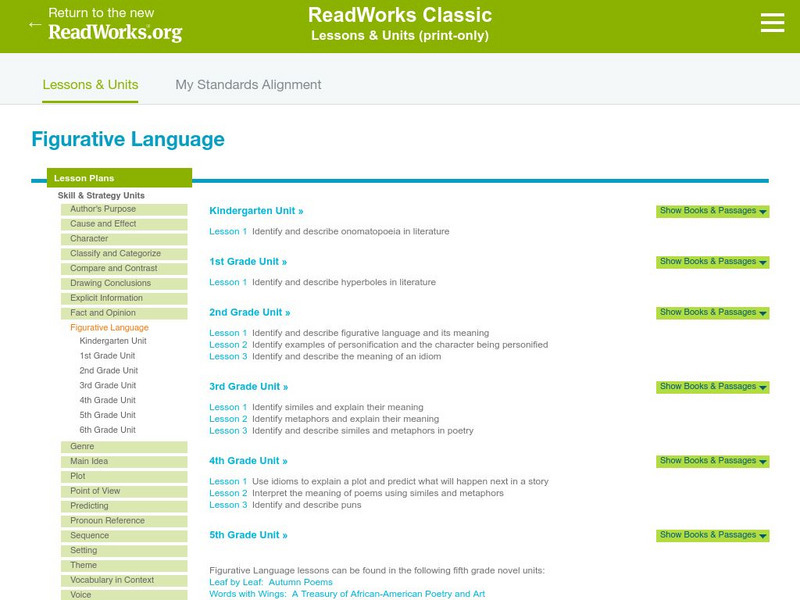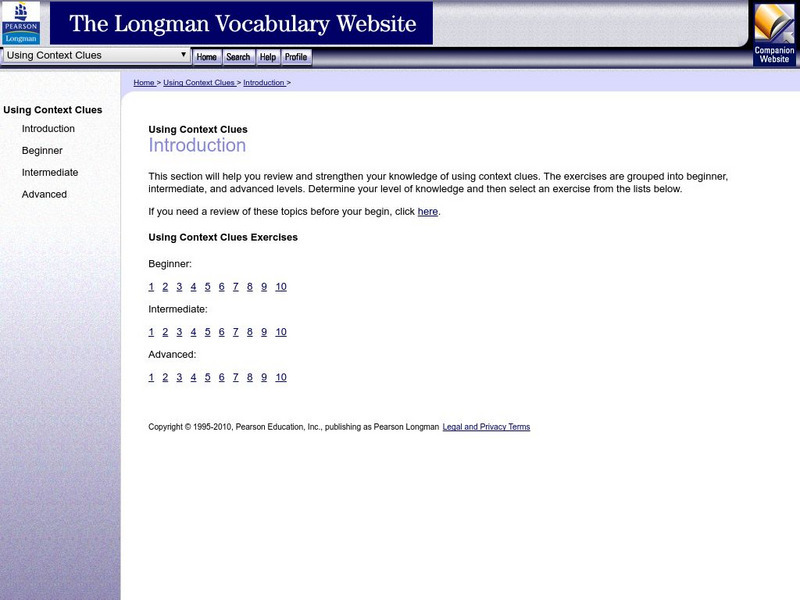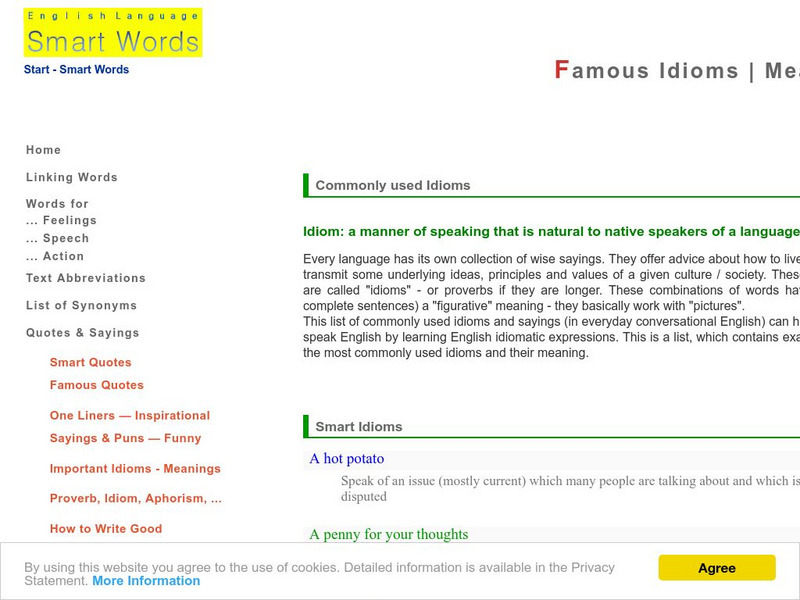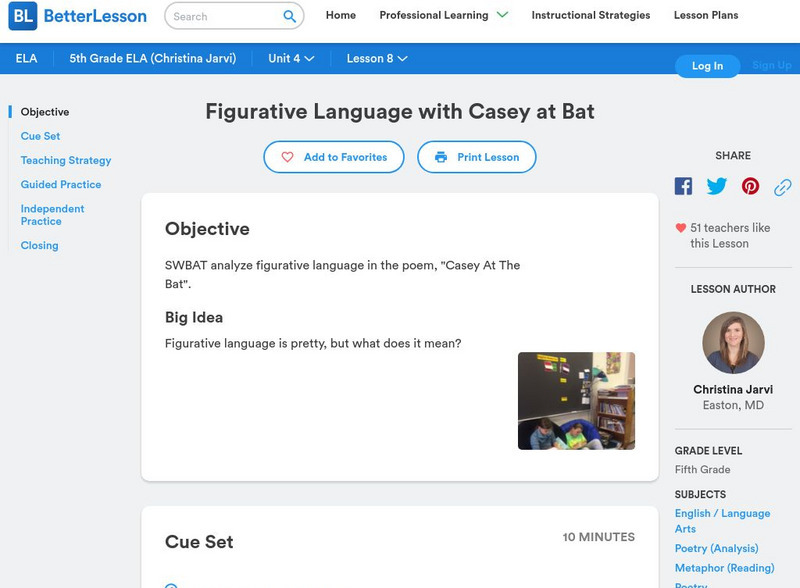TES Global
Blendspace: Rl 5.4 Figurative Language
This twelve-part learning module provides assorted references for figurative language terms. This blendspace provides reproducible charts, flash cards, a game, video tutorial lessons, and rap songs. L.9-10.5 Fig Lang/nuances
E Reading Worksheets
E Reading Worksheets: Figurative Language Poems With Questions
This learning module provides remediation and extra practice with identifying figurative language techniques in the context of poems. Nine different worksheets are available to help reinforce the concept of figurative language in poetry.
E Reading Worksheets
E Reading Worksheets: Personification Worksheets
This learning module provides remediation and extra practice with identifying and explaining personification in sentences. Reinforcement for personification is provided through the nine different worksheets.
E Reading Worksheets
E Reading Worksheets: Simile Worksheets
This site contains figurative language worksheets that assess students' understanding of similes in the context of sentence. After seeing an example, students will fill in the words that are compared in each simile. In addition, students...
E Reading Worksheets
E Reading Worksheets: Figurative Language Examples
Along with definitions for four types of figurative language, this learning module provides numerous examples. Similes, metaphors, personification, and hyperbole are the types of figurative language featured.
E Reading Worksheets
E Reading Worksheets: Idiom Worksheets
This site provides seven worksheets to help students understand idioms and their figurative meanings better. In each exercise, students will explain the meaning of idioms that are embedded into sentences.
TES Global
Blendspace: Figurative Language
A twelve-part learning module on figurative language including links to images, videos, a song, and a game to help students learn.
E Reading Worksheets
E Reading Worksheets: Figurative Language: Reading Test 3
A ten-question quiz on recognizing similes, metaphors, hyperbole, and personification. Results can be printed, saved, or emailed.
Read Works
Read Works: Figurative Language
[Free Registration/Login Required] This site contains a collection of passage that include figurative language lessons. Each lesson includes questions to assess student understanding.
Read Works
Read Works: 4th Grade Lesson: Similes and Metaphors
[Free Registration/Login Required] A lesson in which students use the book Poetry for Young People: Langston Hughes edited by David Roessel and Arnold Rampersad to learn to identify and understand the use of simile and metaphor in...
Read Works
Read Works: 3rd Grade Lesson: Poetry
[Free Registration/Login Required] A lesson plan in which students use two provided poems to learn to identify and understand the use of similes and metaphors in poetry. Lesson includes direct teaching, guided practice, and independent...
Read Works
Read Works: Fourth Grade: Three Lesson Unit: Figurative Language
[Free Registration/Login Required] A lesson plan, based on In a Pickle and Other Funny Idioms by Marvin Terba, in which young scholars learn how understand idioms and use them to explain the plot and to make predictions. With free login,...
TES Global
Blendspace: Figurative Language & Tone
A twelve-part learning module with links to texts, videos, and websites on figurative language and tone.
McGraw Hill
Mc Graw Hill: Informational Text: Craft and Structure: Figurative Language
Explains what figurative language is and how to determine its meaning. Also provides a practice exercise.
Savvas Learning
Pearson Education: The Longman Vocabulary Website: Using Context Clues
Discover how to use context clues to improve your reading skills. This resource features exercises for beginners, intermediate and advanced students. L.9-10.4a, L.8.2.B Context/Meaning
PBS
Wnet: Thirteen: I Have a Metaphor
This lesson not only examines the message of Dr. King, but also the words themselves. This is a lesson in identifying the literary devices that he used in his "I Have a Dream" Speech. It will introduce the following literary devices:...
E Reading Worksheets
E Reading Worksheets: Figurative Language Worksheets
This learning module provides remediation and extra practice with identifying different types of figurative language. Reinforcement is provided through the worksheets, quizzes, video game links, and online sites for the following types...
E Reading Worksheets
E Reading Worksheets: Figurative Language Activities
Numerous activities, games, quizzes, lessons, and PowerPoint presentations are provided for the topic of "figurative language" in writing. Students will have numerous exposures to examples. Students will also be able to practice...
Love To Know Media
Your Dictionary: Literary Terms Lesson Plan
This is a lesson plan for teaching the seven literary terms used in poetry: simile, metaphor, alliteration, imagery, hyperbole, personification, and onomatopoeia.
Other
Smart Words: Famous Idioms and Meaning
This is a list of the 50 most commonly used idioms and their meanings.
Better Lesson
Better Lesson: Unit: Figurative Language With Casey at Bat
In this lesson, 5th graders learn how to analyze figurative language in the poem, "Casey At The Bat."
McGraw Hill
Mc Graw Hill: Vocabulary Acquisition and Use: Understand Figurative Language
Explains what similes and metaphors are and how they are alike and different. Provides examples and practice sheets for each.
PBS
Pbs Learning Media: Literary Elements and Techniques: Figurative Language
Discover how authors use figurative language to enhance their writing and explore the differences between similes and metaphors in this animated video [3:37] from WNET. Discussion questions below help students to further apply their...
PBS
Pbs Learning Media: Literary Elements and Techniques: Imagery
Explore the literary technique of imagery to see how sensory language contributes to the meaning and feeling of a poem in this animated video [1:23] from WNET. Discussion questions below help students to further apply their understanding...


